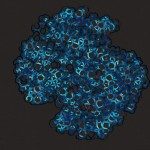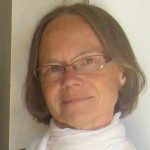Lien vers Pubmed [PMID] – 6241558
Cold Spring Harb. Symp. Quant. Biol. 1984;49:735-44
We have presented the first results of three ongoing experiments on the biochemical mechanism of lambda site-specific recombination. First, we have shown that under the tension induced by negative supercoiling, a segment of attP and attR undergoes a transition to a novel conformation. The basis for detecting this new structure implies that it contains unpaired bases, perhaps arising as a result of the transition of an inverted repeat to a cruciform structure. Since the segment undergoing transition lies outside the homologous core region, the unpairing of DNA that we have detected cannot be directly involved in synapsis. It will be of interest to learn whether recombination proteins alter this conformational change, possibly to extend its effect into the core region. Second, we have demonstrated that replacing phosphate groups in attachment site DNA with phosphorothioates interferes with recombination. Our first experiments indicate that the effect depends on locating phosphorothioates precisely at the site of recombination crossover. We take this to mean that interference is primarily at the step of breakage and reunion; we plan to exploit this inhibition in an attempt to trap synaptic intermediates in recombination. Finally, we have found that the rare cleavage of attP DNA by Int can involve either one or both strands of the duplex. This indicates that the degree of coordination between Int action at the two halves of the core region can be variable. Although we do not know whether this variability affects binding of Int, breakage of DNA, or resealing of broken strands, our data suggest that this variability can be regulated by sulfhydryl reagents.

